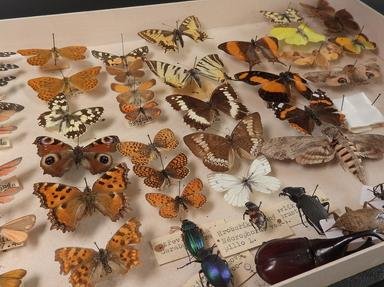Quiz Answer Key and Fun Facts
1. Antlions belong to the Myrmeleontidae family. The Myrmeleontidae belong to what insect order?
2. An adult antlion looks very much like a damselfly, but there is one feature that can be easily used to distinguish them. Which of these is it?
3. This newly emergent adult was photographed before fully freeing its wings. If it is an 'average' antlion, approximately how much of its lifespan has already passed?
4. When a larval antlion moves around, it commonly leaves a trail in the soil where it loves to establish itself. This has led to them being given what common nickname?
5. What is the purpose of these holes, dug by larval antlions?
6. How many legs does an antlion larva have?
7. Is the antlion larva venomous?
8. Which of the following is something the antlion larva CAN do?
9. While the larval antlion feasts on ants, the adult antlion does not eat anything during its short lifespan.
10. Where should I look to see if my adult antlion is male or female?
Source: Author
looney_tunes
This quiz was reviewed by FunTrivia editor
rossian before going online.
Any errors found in FunTrivia content are routinely corrected through our feedback system.
